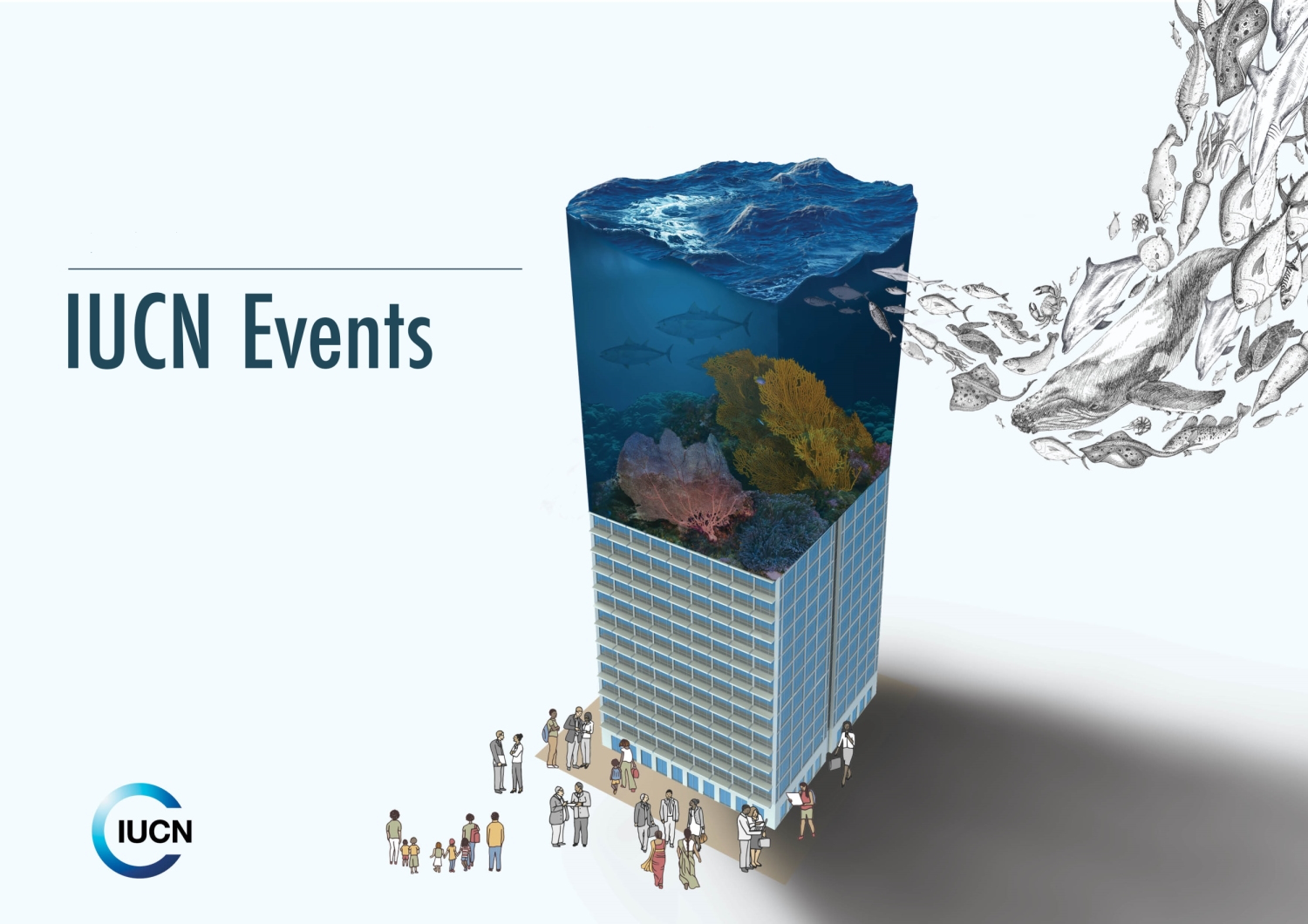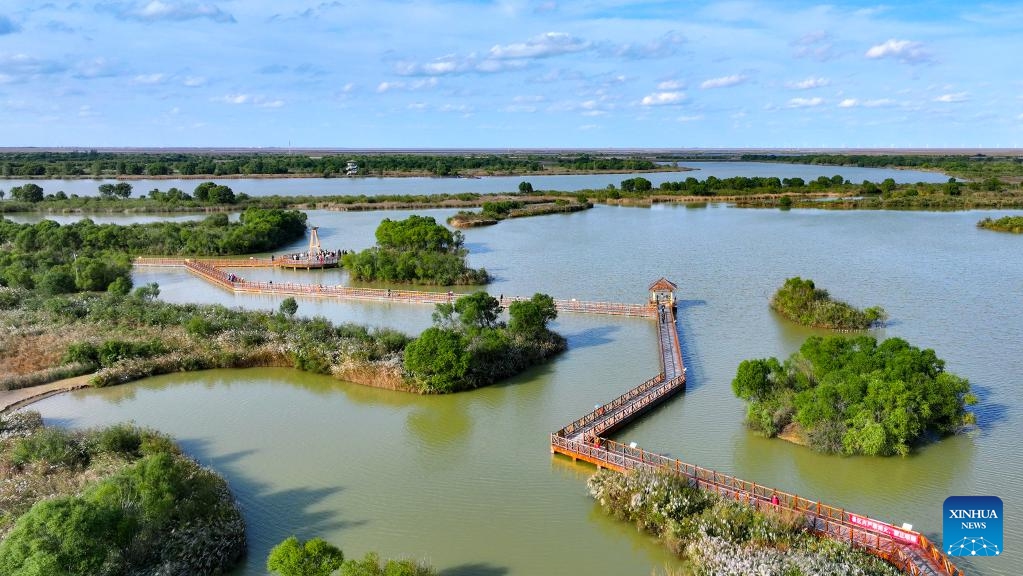Regional Workshop on Promoting a Better Understanding of the BBNJ Agreement – IUCN

Workshop on BBNJ Agreement to Advance Sustainable Development Goals
Event Overview and Strategic Objectives
A workshop focused on the Agreement on Biodiversity Beyond National Jurisdiction (BBNJ) is scheduled from 1 to 5 December 2025. The event will be held at the United Nations Conference Centre in Addis Ababa (UNCC-AA), Ethiopia, under the auspices of the Economic Commission for Africa (ECA). The primary objective of this workshop is to build capacity for the implementation of the BBNJ Agreement, thereby directly contributing to the achievement of the 2030 Agenda for Sustainable Development, with a significant focus on ocean-related goals.
Alignment with Sustainable Development Goal 14: Life Below Water
The workshop’s agenda is fundamentally aligned with the targets of SDG 14, which aims to conserve and sustainably use the oceans, seas, and marine resources for sustainable development. Key contributions include:
- Target 14.c: Enhancing the conservation and sustainable use of oceans by implementing international law, as reflected in the United Nations Convention on the Law of the Sea. The entire workshop is dedicated to understanding and implementing the BBNJ Agreement, a key instrument of this international law.
- Target 14.5: Conserving at least 10 per cent of coastal and marine areas. The workshop’s focus on area-based management tools, including marine protected areas (MPAs), provides a direct pathway for nations to meet this critical conservation target.
- Target 14.2: Sustainably managing and protecting marine and coastal ecosystems. The in-depth training on area-based management tools is designed to equip participants with the knowledge to protect vulnerable ecosystems in areas beyond national jurisdiction.
Workshop Structure and Thematic Focus
The workshop will be conducted in two distinct segments, each designed to build comprehensive knowledge and practical skills for implementing the BBNJ Agreement and advancing the SDGs.
- Segment One: Foundational Knowledge for SDG Implementation
Delivered by the relevant UN Division, this segment will provide a comprehensive overview of the BBNJ Agreement. It will cover all principal elements and cross-cutting issues, establishing the legal and policy foundation necessary for nations to fulfill their commitments under SDG 14. - Segment Two: Practical Tools for Marine Conservation
Delivered by the International Union for Conservation of Nature (IUCN), this segment will offer specialized, in-depth learning. The focus will be on the practical application of area-based management tools, such as marine protected areas, and the necessary means of implementation. This directly supports the on-the-ground actions required to achieve specific conservation targets outlined in the Sustainable Development Goals.
Fostering Global Partnerships (SDG 17)
This workshop exemplifies SDG 17: Partnerships for the Goals. The collaboration between the ECA, a UN Division, and the IUCN demonstrates a multi-stakeholder approach essential for addressing complex global challenges like ocean conservation. By hosting the event in Addis Ababa, the workshop also underscores the importance of inclusive participation from all regions, particularly developing nations, in the global effort to protect marine biodiversity and ensure the equitable and sustainable use of marine resources.
Analysis of SDGs in the Provided Article
1. Which SDGs are addressed or connected to the issues highlighted in the article?
-
SDG 14: Life Below Water
- The article’s central theme is the BBNJ (Biodiversity Beyond National Jurisdiction) Agreement, which is fundamentally about the conservation and sustainable use of marine biological diversity. The mention of “area-based management tools, including marine protected areas” directly addresses the core objectives of SDG 14, which is to conserve and sustainably use the oceans, seas, and marine resources.
-
SDG 17: Partnerships for the Goals
- The article describes a collaborative effort to build capacity for implementing an international agreement. The workshop is hosted by the United Nations Economic Commission for Africa (ECA) and delivered in part by the International Union for Conservation of Nature (IUCN). This partnership between a UN body and a major international conservation organization to support countries in implementing the BBNJ Agreement exemplifies the multi-stakeholder partnerships required to achieve the SDGs.
2. What specific targets under those SDGs can be identified based on the article’s content?
-
Targets under SDG 14 (Life Below Water)
- Target 14.5: “By 2020, conserve at least 10 per cent of coastal and marine areas, consistent with national and international law and based on the best available scientific information.” The article’s focus on providing “in-depth learning about a number of aspects pertaining to area-based management tools, including marine protected areas” directly supports the implementation of this target by building capacity to establish and manage such areas.
- Target 14.c: “Enhance the conservation and sustainable use of oceans and their resources by implementing international law as reflected in the United Nations Convention on the Law of the Sea…” The BBNJ Agreement is a new international legally binding instrument under the UN Convention on the Law of the Sea (UNCLOS). The workshop, which provides an “overview of the BBNJ Agreement,” is a direct effort to facilitate its implementation, thereby supporting this target.
-
Targets under SDG 17 (Partnerships for the Goals)
- Target 17.9: “Enhance international support for implementing effective and targeted capacity-building in developing countries to support national plans to implement all the Sustainable Development Goals…” The workshop, held in Addis Ababa and hosted by the ECA, is a clear example of a capacity-building initiative aimed at supporting developing countries in Africa to understand and implement the BBNJ Agreement, which is crucial for achieving SDG 14.
- Target 17.16: “Enhance the global partnership for sustainable development, complemented by multi-stakeholder partnerships…” The collaboration between the UN (via ECA) and IUCN to deliver this workshop is a model of the multi-stakeholder partnership described in this target, mobilizing expertise to support sustainable development goals.
3. Are there any indicators mentioned or implied in the article that can be used to measure progress towards the identified targets?
The article does not mention explicit quantitative indicators, as it is an announcement for a workshop. However, it implies the relevance of several official SDG indicators by discussing the activities and tools that these indicators are designed to measure.
-
Implied Indicators for SDG 14
- Indicator 14.5.1: “Coverage of protected areas in relation to marine areas.” The workshop’s focus on “marine protected areas” directly relates to the efforts that this indicator measures. Building capacity in this area is a prerequisite for countries to increase their coverage of marine protected areas.
- Indicator 14.c.1: “Number of countries making progress in ratifying, accepting and implementing… ocean-related instruments…” The workshop aims to provide an overview and understanding of the BBNJ Agreement, which is a critical step for countries to move towards ratification and implementation, the very actions measured by this indicator.
-
Implied Indicators for SDG 17
- Indicator 17.9.1: “Dollar value of financial and technical assistance… committed to developing countries.” While no dollar value is mentioned, the workshop itself represents a form of technical assistance and capacity-building support provided by international organizations (ECA, IUCN) to developing countries, which is the subject of this indicator. The event itself is a data point for measuring such support.
4. Summary Table of SDGs, Targets, and Indicators
| SDGs | Targets | Indicators (Implied from the article) |
|---|---|---|
| SDG 14: Life Below Water |
14.5: Conserve at least 10% of coastal and marine areas.
14.c: Enhance conservation and sustainable use of oceans by implementing international law (UNCLOS). |
14.5.1: Coverage of protected areas in relation to marine areas (implied by the focus on “marine protected areas”).
14.c.1: Number of countries making progress in ratifying and implementing ocean-related instruments (implied by the workshop on the “BBNJ Agreement”). |
| SDG 17: Partnerships for the Goals |
17.9: Enhance international support for capacity-building in developing countries.
17.16: Enhance the global partnership for sustainable development. |
17.9.1: Dollar value of financial and technical assistance (implied by the provision of a capacity-building workshop by international bodies).
(No specific quantitative indicator for 17.16, but the partnership between ECA and IUCN is a qualitative example of its implementation). |
Source: iucn.org
What is Your Reaction?
 Like
0
Like
0
 Dislike
0
Dislike
0
 Love
0
Love
0
 Funny
0
Funny
0
 Angry
0
Angry
0
 Sad
0
Sad
0
 Wow
0
Wow
0
















































:focal(1500,1000)/https://media.globalcitizen.org/a6/9a/a69a4720-d8a1-4715-b596-18738d03c05c/rotary_polio_hero_image.jpg?#)







/countries/sri-lanka/photo-credit---dmc-sri-lanka.tmb-1200v.jpg?sfvrsn=dc298bcc_1#)



















